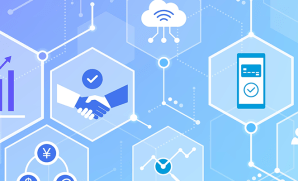Unsurprisingly, IDC’s latest ‘Future Enterprise Resiliency and Spending Survey—Wave 2’ revealed that almost all enterprises are aggressive and purposeful about their digital evolution. Nearly 51% are already running a digital business, while 49% are still actively transforming towards one[1]. A critical advantage that the 51 percenters have is the benefits of a modern ERP system for better business execution.
And why not? After all, a clean core approach is crucial for leveraging the latest innovations, ensuring system agility, and minimizing disruptions during upgrades.
SAP’s Business Technology Platform (BTP) plays a pivotal role by enabling clean core extensions, allowing organizations to add new functionalities without modifying the core system. This blog explores how SAP BTP, especially its Business AI capabilities, supports the clean core methodology, enabling businesses to stay current, agile, and innovative.
The benefits of current SAP ERP innovations
The concept of a clean core revolves around keeping the ERP system unmodified and seamlessly leveraging the latest innovations. Historically, modifying core codes in ERP systems made staying current with new releases challenging. However, SAP’s clean core methodology, facilitated by BTP, addresses this issue by enabling extensibility outside the core system. This ensures that when SAP releases new versions of S/4HANA, innovations are automatically available, reducing time to market and enhancing competitiveness.
For instance, SAP’s embedded AI capabilities, such as the digital assistant unveiled at the SAP Sapphire conference, become instantly accessible with each upgrade. This simplifies adopting AI-driven solutions and empowers businesses to harness AI for enhanced decision-making and process automation. According to IDC, organizations leveraging SAP BTP have achieved an average annual benefit of $195,100 per 100 users by better-using data, delivering timely functionality, and leveraging automation across business processes. But what are the hurdles these organizations may have faced in their journey toward a clean core?
Challenges that hinder the Clean Core approach
There are varied ground realities that often make it difficult for organizations to approach Clean Core, the primary ones being:
Technical issues:
Many organizations struggle with the Clean Core principles because they treat it and SAP BTP as purely technical tasks. Development departments often see Clean Core and SAP Extension Suite as limitations. Compared to the SAP Extension Suite, the ABAP Workbench adds complexity and restricts developers’ freedom. This, coupled with the lack of maturity in available APIs and objects, raises doubts about the technical feasibility of the Clean Core Principles.
Change Management issues:
Addressing Clean Core as a technical task causes developers to be involved late in transition projects, leading to discomfort and uncertainty. Developers may be concerned about managing the workload within tight project timelines. The challenge is ensuring adherence to the Clean Core principle, which requires organizational commitment, not just change management.
Organizational issues:
Project managers already face enough organizational challenges without Clean Core. The primary goal is often to get essential functionality up and running, especially in greenfield transitions. Clean Core, treated as a technical task, usually fails to receive attention. This is seen as inefficient due to the perceived effort required for little benefit, especially in re-implementing legacy code.
Getting started with the Clean Core journey
For organizations transitioning from SAP ECC to S/4HANA, embarking on the clean core journey begins with tools like the Custom Code Migration app. This app helps identify and segment existing custom codes, advising whether to retire, modify, or migrate them to SAP BTP. By moving non-essential customizations to BTP, businesses can maintain a clean core in their S/4HANA environment.
Leveraging BTP for Clean Core extensions
SAP BTP offers many tools and services to facilitate clean core extensions. These include low-code/no-code platforms, pro-code environments, and process automation tools. Here’s how each can be leveraged:
- Low-Code/No-Code platforms: Tools like SAP AppGyver and SAP Build allow users to create applications with drag-and-drop interfaces, reducing the need for extensive coding.
- Pro-Code environments: For more complex requirements, developers can use SAP Business Application Studio and SAP UI5 SDK to build robust applications. These can be deployed as UI5 tiles or integrated within SAP Build Workzone, providing a seamless user experience indistinguishable from core S/4HANA functionalities.
- Process automation: SAP’s tools help automate repetitive tasks, enhancing efficiency and accuracy. For example, automating data upload processes from Excel files into S/4HANA Cloud can save significant time and reduce errors.
SAP BTP enables faster completion of projects, with an average of 31% faster completion compared to previous approaches, providing significant time and cost savings. For example, a global chemicals manufacturer engaging with YASH technologies strengthened its e-commerce order management by eliminating 90% of manual interventions and reducing order cycle time by 15% using automation in SAP BTP. (Read the complete case study
SAP S/4HANA Cloud integration
Integration is a cornerstone of maintaining a clean core. SAP BTP’s Integration Suite provides robust capabilities for connecting S/4HANA Cloud with other SAP solutions (e.g., SuccessFactors, Concur) and third-party applications (e.g., Salesforce, Workday). Pre-built integration flows available on API.sap.com simplify deployment, while custom APIs can be developed to meet specific business needs. To maintain a clean core, organizations should adopt the following best practices:
- Stay current with SAP releases to leverage new features, security enhancements, and performance improvements.
- Establish clear guidelines for when and how to implement extensions, ensuring they do not impact the core system.
- Develop stable, well-documented integration interfaces that can withstand upgrades.
- Maintain data integrity by regularly reviewing and cleaning master and transactional data.
- Adhere to standardized processes and use SAP Best Practices to streamline operations.
The cost of ignoring Clean Core principles vs. capitalizing on it
Maintaining a clean core with SAP BTP is crucial for organizations aiming to stay agile, innovative, and competitive in today’s digital landscape. Combined with the developers’ resistance, the organizational challenges may lead to a de-prioritization of Clean Core.
This, however, is generally a critical error because the Clean Core Principle needs to be followed from the beginning. By delaying or discarding Clean Core, organizations deprive themselves of the chance to reap the benefits of the new opportunities delivered by Clean Core, the SAP Extension Suite, and the SAP BTP.
As we continue to explore the potential of SAP BTP in this blog series, we look forward to sharing more insights on creating robust, future-proof extensions that enhance the core capabilities of your SAP environment. Stay tuned for our upcoming blogs, where we will dive deeper into automation, AI functionalities within SAP BTP, and strategies for intelligent decision-making and innovation. Click here to learn more about YASH’s SAP BTP services and center of excellence (CoE)
















